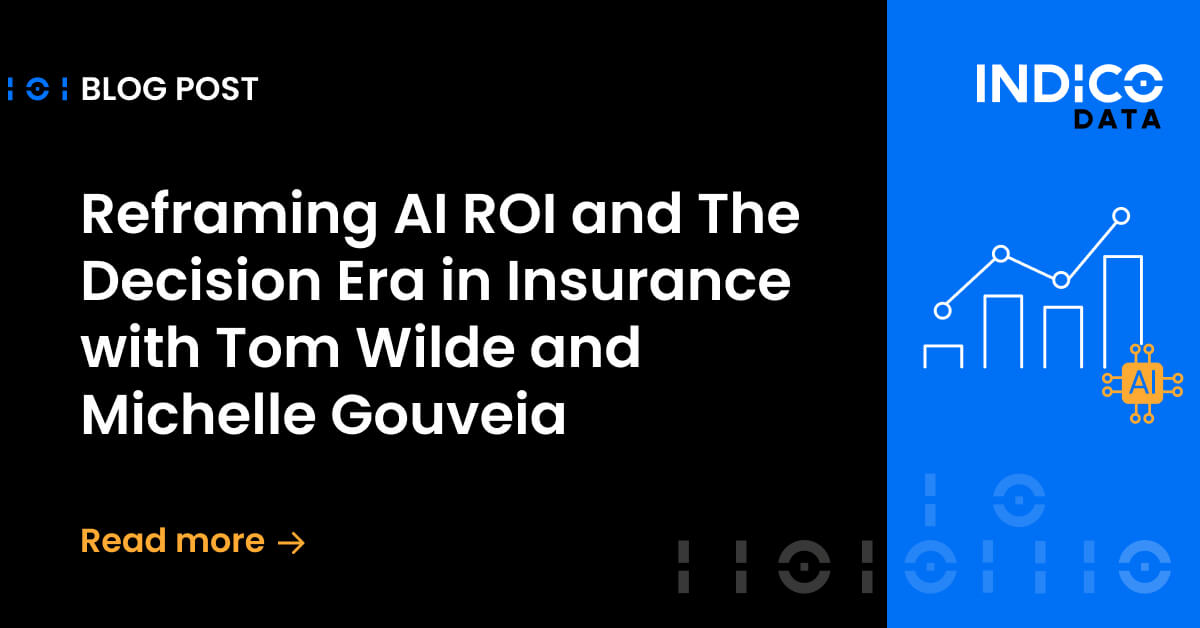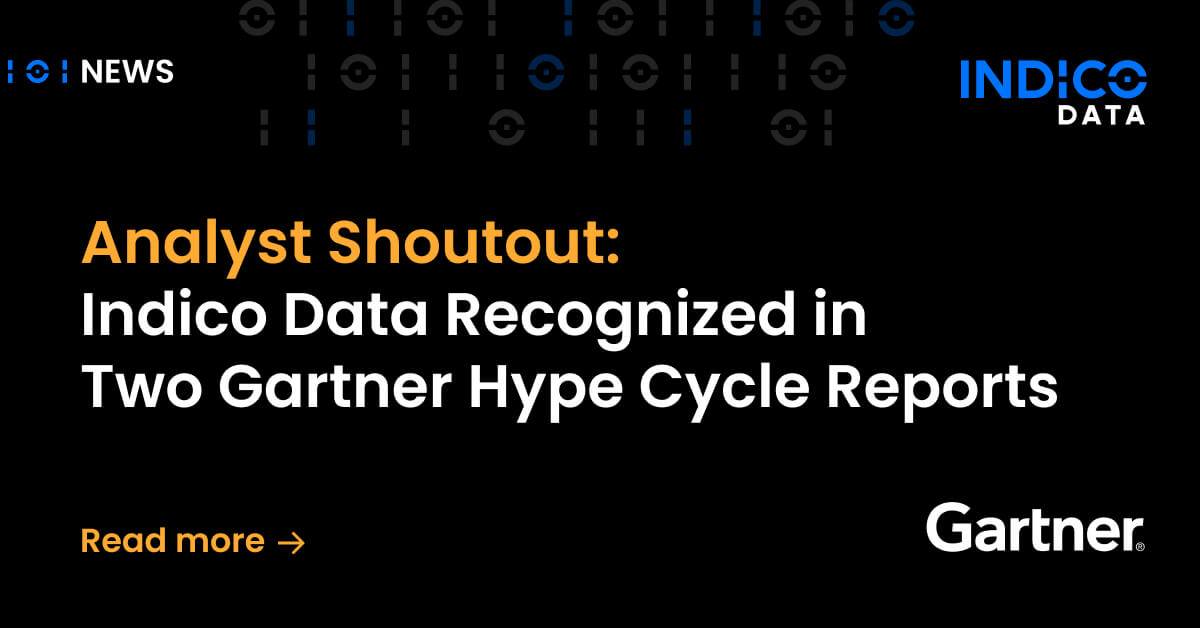The insurance industry is navigating a dynamic landscape where innovation and risk management intersect. With increasing complexity in underwriting, claims evaluation, and policy servicing, insurers are now looking to AI-powered solutions as a way to not only streamline operations but also supercharge their decision-making processes. Indico Data’s Decision Automation Platform is leading this transition, empowering global carriers with actionable insights derived from unstructured data and enabling real-time, more precise decisions.
Whether you’re an IT manager aiming to enhance operational efficiency, a business analyst tasked with optimizing workflows, or a CEO focused on improving profitability, the promise of AI-powered decisioning represents a game-changing opportunity. But how do you balance this innovation with the inherent risks? This post explores how implementing underwriting automation and decision-enhancing AI is transforming the insurance landscape.
Related Content: How to implement underwriting automation without disrupting your existing workflows
The challenges traditional decision workflows present
Insurance decision-making processes have historically relied on manual workflows. While thorough, these approaches often involve inefficiencies that slow down operations, increase errors, and limit an insurer’s ability to respond to market demands quickly.
Inefficient data extraction
Traditionally, underwriters, claims handlers, and risk evaluators have relied on manual methods to process submissions, applications, and claims. This labor-intensive approach often involves extracting data from an array of unstructured formats, such as PDFs, scanned images, and emails. The time investment required leaves insurers vulnerable to delays, particularly during peak periods or catastrophic events that create submission surges.
Take underwriting as an example. Manual data entry from engineering assessments, zoning regulations, or historical claims can bottleneck operational flow, stretching underwriters too thin and leading to missed opportunities in high-value submissions.
Inconsistent decision-making
Subjectivity is another challenge. Relying on individual expertise creates inconsistent risk assessments, potentially skewing an insurer’s portfolio. Intuition, while an important part of underwriting expertise, can introduce bias or misaligned resource allocation, with high-value opportunities overlooked in favor of more straightforward cases.
Without a process grounded in real-time, data-driven insights, insurers face challenges not only in delivering accurate quotes but also in maintaining balanced portfolios that meet profitability goals.
Fragmented systems
Legacy systems exacerbate these inefficiencies. Siloed data and disconnected systems make it hard to create a unified picture during risk evaluation or claims processing. For insurers managing complex product lines like catastrophe insurance, these limitations hinder their ability to effectively assess risks, leading to incomplete analyses and lost competitive edge.
Related Content: Beyond document extraction: how AI is reshaping insurance decisioning
Why AI-powered underwriting automation changes the game
The advent of AI-powered underwriting automation addresses these challenges head-on, enabling insurers to process data efficiently while improving decision accuracy and scalability. Here’s how it works:
Faster, more accurate data extraction
Indico Data’s Decision Automation Platform employs natural language processing (NLP) and machine learning to extract and classify data from unstructured formats with unmatched speed and precision. For example, the platform can instantly parse loss runs, statements of value (SOVs), or engineering reports and convert them into structured data formats for immediate analysis.
With pre-trained AI models tailored for insurance workflows, insurers eliminate the time wasted on manual data entry. This 97% success rate in implementation has allowed Indico’s users to cut processing times by 70% and quadruple capacity.
Dynamic, data-driven prioritization
AI doesn’t just process data faster; it processes data smarter. Tools like Indico Data’s AgenticAI can prioritize submissions by assigning risk scores and aligning evaluations with underwriting guidelines. Unlike manual prioritization, this process ensures consistent, real-time focus on the most valuable opportunities.
For instance, during a natural disaster, underwriting AI can identify and fast-track high-risk submissions from affected regions, ensuring timely quotes while mitigating inconsistencies in evaluation.
Streamlined scalability
One of AI automation’s most significant advantages is its scalability. Indico’s solutions allow insurers to handle data and decisions across 20,000 insurance-specific data points, 900 document types, and 70 languages simultaneously. Whether during renewal cycles or natural disasters, AI-driven solutions ensure that insurers maintain operational efficiency without compromising decision quality.
Empowered collaboration between AI and humans
Importantly, AI doesn’t replace human expertise but enhances it. By offloading repetitive, time-intensive tasks, Indico Data’s platform allows underwriters, claims evaluators, and policy teams to focus on higher-value, strategic decision-making. This hybrid model ensures that human judgment complements AI precision, creating a symbiotic relationship that drives better outcomes.
How AI balances innovation with risk
Adopting AI-powered solutions requires balancing the innovation it brings with the risks associated with change. Indico Data’s Decision Automation Platform excels in delivering trustworthy, scalable AI while alleviating risks.
No-code scalability for quick adoption
ith no need for model training, insurers can achieve measurable results from day one, reducing both the upfront investment and the operational risk of implementation.
Enhanced compliance and transparency
Indico’s solutions provide detailed audit trails for every decision, ensuring clear documentation for regulatory requirements. Whether analyzing risk audits or maintaining consistent compliance, these features offer insurers reliable accountability.
Proven business outcomes
The real test of AI solutions lies in their impact. Indico Data’s clients report an 85% faster speed to quote, enhanced underwriting accuracy, and significant operational cost savings. For example, a Fortune 50 insurer using Indico’s platform realized $100 million in savings, while another increased quarterly net premiums by $30 million.
Related Content: How AI-powered underwriting automation improves decision speed and accuracy
Actionable steps for integrating AI into insurance decision workflows
- Identify key bottlenecks in your current workflows, such as delays in data extraction or inconsistencies in decision-making.
- Explore purpose-built AI solutions, like Indico Data’s platform, that offer pre-configured workflows tailored for insurance needs.
- Prioritize stakeholder buy-in and training. Equip underwriters, claims handlers, and policy teams with the tools and knowledge they need to collaborate effectively with AI systems.
- Track ROI and iterate. Use key performance indicators such as processing time reductions and accuracy improvements to measure the platform’s success and guide continuous improvements.
Taking the next step in insurance innovation
AI-powered automation is no longer a distant future—it’s shaping the insurance industry today. By leveraging solutions like Indico Data’s Decision Automation Platform, insurers have the opportunity to reimagine workflows, improve decision accuracy, and maintain a competitive edge in a rapidly evolving market.
To discover how Indico Data can transform your underwriting workflows and deliver immediate ROI, connect with an expert today. Achieve better decisions with better data.
Subscribe to our LinkedIn newsletter.
Frequently asked questions
- How does Indico’s AI platform integrate with existing legacy insurance systems? While the blog mentions that Indico’s platform eliminates the need for model training and enables quick adoption, it doesn’t detail integration. Indico’s Decision Automation Platform is designed with open APIs and pre-built connectors, allowing it to integrate with most legacy systems including policy administration platforms, document management systems, and CRMs. This ensures a smooth transition without the need for overhauling existing infrastructure.
- What types of data privacy or security measures does Indico’s platform use to protect sensitive insurance information? The blog highlights compliance and audit trails but doesn’t specify security protocols. Indico implements enterprise-grade security measures including end-to-end encryption, role-based access control, and regular security audits. It also complies with major data privacy regulations like GDPR and HIPAA, ensuring that sensitive insurance data remains protected throughout processing.
- What kind of training or support is available to help insurance teams adopt and effectively use the platform? Though the blog suggests a no-code, easy-to-use approach, it doesn’t specify support mechanisms. Indico offers onboarding support, in-platform tutorials, and dedicated customer success teams. For larger deployments, they provide custom training workshops, role-based learning paths, and ongoing technical support to ensure that underwriting, claims, and IT teams can use the platform confidently and effectively.


